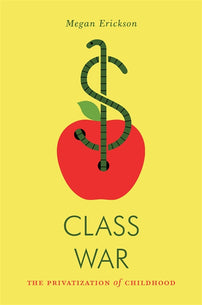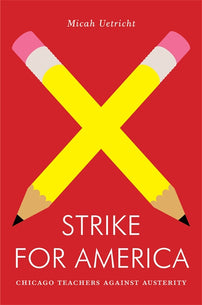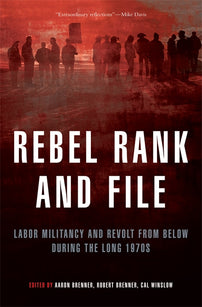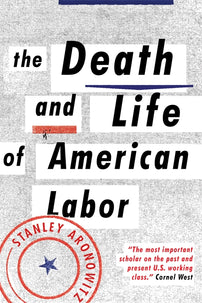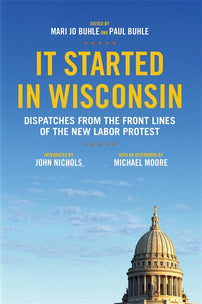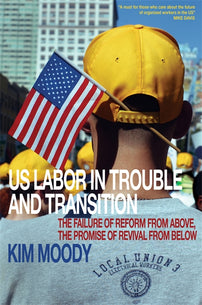Another Labor Movement: the West Virginia Teachers' Strike
The West Virginia Strike bears the fingerprints of resistance to virtually every malevolent feature of neoliberal capitalism.
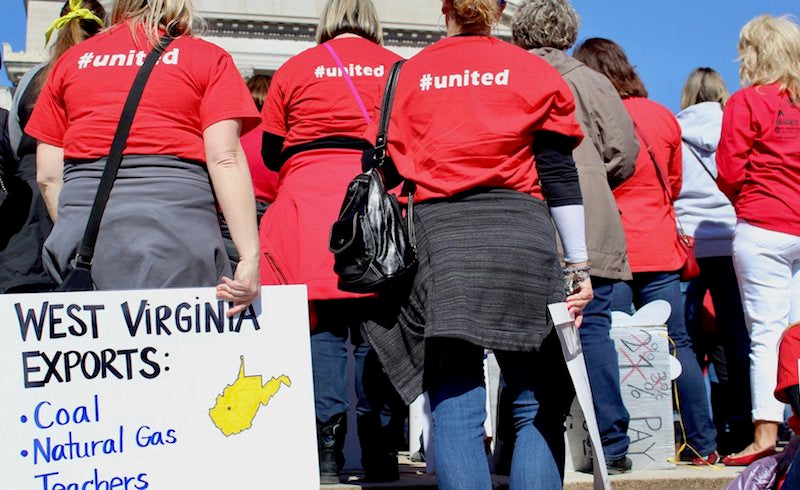
First published at From the River to the Sea.
We know that we come from these mountains and we are strong and we have pride and we love this state. We come from an area that is known for standing up for what they believe in. The union wars they originated in the south in Mingo County.
We believe we’re following in their footsteps. We believe the movement was started years ago through the mine wars. We’re just reviving the movement that was started years ago. — Striking West Virginia Teacher Katie Endicott in The New York Times March 1, 2018
The West Virginia Teachers' strike takes place at a historic moment in national politics.
The illegal statewide strike of 20,000 teachers that has shut down every school in the state continues into its second week following the rejection of a deal offered by the state government and the teachers union leadership.
And while a funereal message emanates from the sclerotic leadership of public sector unions due to the impeding ruling of the Supreme Court in the Janus case, real funerals also took place following the latest mass shooting in Parkland, Florida.
Enraged students from Marjory Stoneman Douglas High School have sparked a new movement for safe schools across the country, while enraged West Virginia teachers are fighting for better funding and a decent living. Adding to this political vortex is the inane talk of arming teachers, wholly rejected by the teachers themselves.
There is a widespread feeling in the country that things have reached a point where change must happen and happen now.
The West Virginia teachers have demonstrated to us that the post Janus-era can be the beginning of another labor movement. Rank and file democracy has carried the day in a state that just a few months ago was written off as Trump country and provides a concrete example of the way forward for teacher and public sector unions.
The West Virginia Strike bears the fingerprints of resistance to virtually every malevolent feature of neoliberal capitalism.
West Virginia school teachers rank 48th out of 50 in the United States in pay. A series of business tax cuts has prevented teachers from having an across-the-board pay hike since 2014. The state’s population is declining, reducing the labor supply for instructors. Substitute teachers are in high demand but short supply. The strike is a strike against a quarter century of support reduction, including wage stagnation. The 2012 Chicago Teachers Union strike, which targeted school closings forced by privatization and charter schools, a massive reduction in the tax base for public education, and "educational apartheid" targeting poor non-white communities, was a harbinger of the West Virginia strike.
West Virginia teachers are on strike for health benefits (called P.E.I.A. in West Virginia) eroded by increasing health care costs and wage reduction. Teachers in West Virginia literally cannot afford to get sick. Their strike indexes attacks on social provisioning that has been accompanied by the privatization of public services and an increasing "health gap" between rich and poor.
The majority of striking teachers — as with most public education workforces — are women. Faced with cuts to social reproduction services (child care, health care) and reduced wages, striking West Virginia teachers indicate the double burden and double vulnerability of women to a deracinated public sphere under neoliberalism.
The strike is a wildcat strike: both illegal and in contradistinction to the leadership of the teacher unions. Rank and file union members rejected Governor Justice’s offer of a 5 percent wage increase (which would have been the largest single-year increase ever for WV teachers) and decided to stay out on strike rather than return to classes. Wildcat strikes are incredibly rare in the contemporary U.S., last seen in the 1960s, including in the coal mining industry, as a symptom of the relative declining weight of Union workers’ run-up to full-scale neoliberalism. The Wildcat tactic indicates a rejection of general complacency within teachers’ unions and its bureaucratic leadership offered by the likes of Randi Weingarten and the American Federation of Teachers.
The strike is taking place in the American South, a region of the United States with historically lower wages because of its history of slavery, anti-unionism, and in the neoliberal era, intensified anti-workerism, and in a “right-to-work” state. “Right-to-Work” legislation in Indiana, Wisconsin and other states has been a huge thorn to organized labor in the neoliberal area. Indeed, West Virginia coal miners were among the first U.S. workers to rise up in the new neoliberal era. In late 1977 and early 1978, 160,000 coal miners from West Virginia to southern Illinois, waged a 111-day rank-and-file strike in opposition to the national leadership of the United Mine Workers of America (UMWA) — against the Bituminous Coal Operators Association (BCOA). Labor historian James Green wrote at the time, “The 1977–1978 coal miners’ strike must be viewed in the context of an overall offensive by the capitalist class.”
Finally, the strike represents a wave of worker discontent with Trump and Trump Era. As middle school teacher Jay O’Neal put it in an interview with Jacobin:
[book-strip index="1" style="display"]This is a fight of working people versus the large corporations. These big companies have controlled and exploited our state for over a century. Historically, it was the coal corporations. But now it’s more the natural gas companies that are calling the shots. We need national exposure on these conflicts.
People like to dismiss West Virginia as Trumpland. But that’s a simplification. A lot of people here didn’t vote for Trump. And you also have a lot of people who voted for him, but who are involved in the strike. Everyone is now saying, “I know when I’m being screwed over. Enough is enough.” Folks are waking up.

